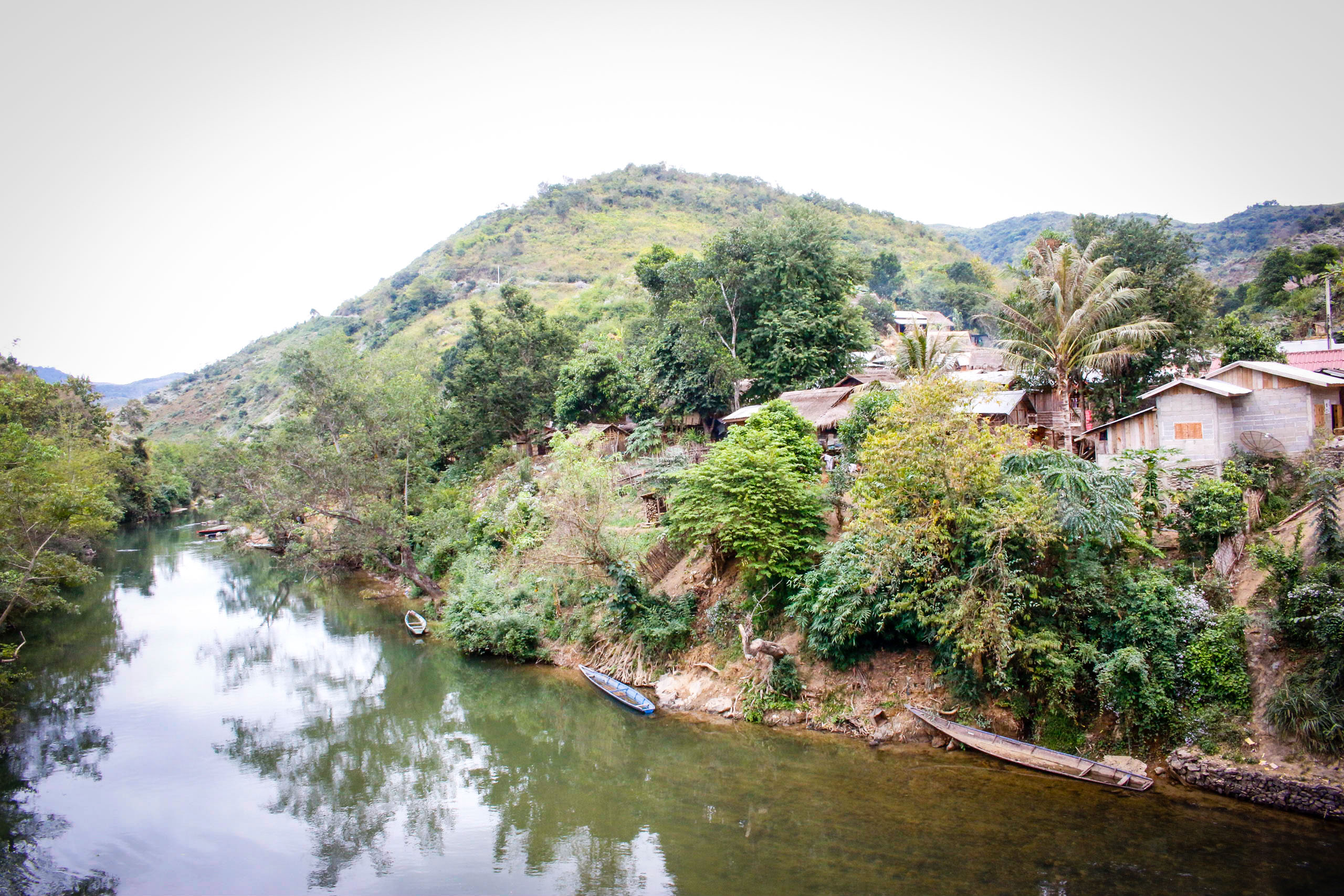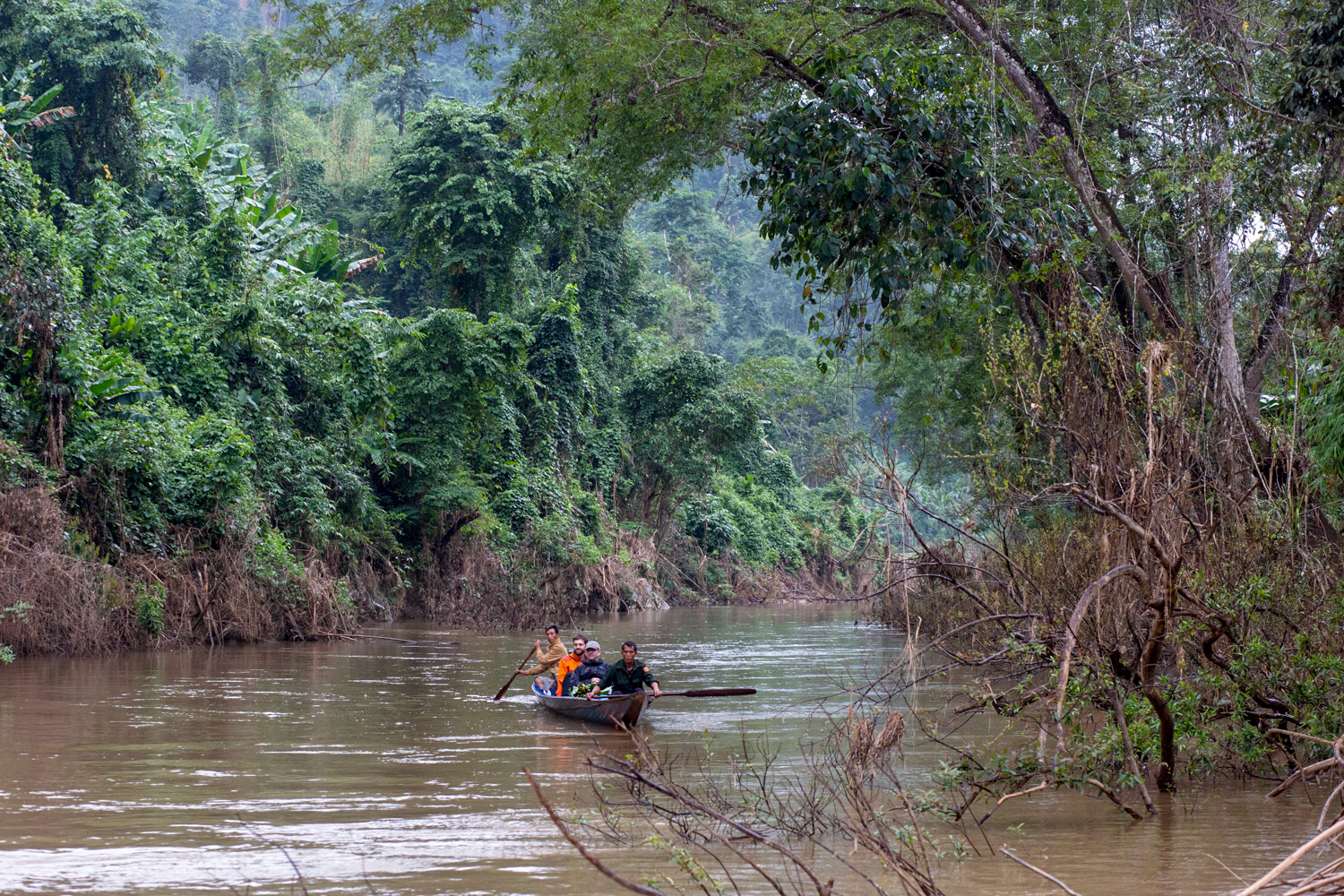Nam Et–Phou Louey (pronounced “naam et poo loo-ee”) National Park (NP) is located in the north-east of Lao PDR. With an area of 401,720 ha, it is the largest of Laos’ protected areas, covering seven districts and three provinces (Houaphan, Luang Prabang and Xieng Khouang provinces).
Mostly hilly or mountainous, it is the source of many rivers. It is named after its two main features, the Et River and Phou Louey (“Forever Mountain”). The area has primary forest remaining in many areas, a high level of biodiversity, and a number of endangered species including tiger, gaur, Sambar deer, and white-cheeked gibbon.
Fast Facts
- NEPL is the largest protected area in Lao PDR.
- Approximately half of the protected area is co-managed with local communities to sustainably harvest wild plants and meat and practice traditional agriculture.
- NEPL has one of the last tiger populations in Indochina.
- There are five other cat species in addition to tigers including leopard, clouded leopard, Asian golden cat, marbled cat, and leopard cat.
- NEPL has the largest population of white-cheeked crested gibbon, which is found only in Vietnam and Lao PDR.
- NEPL has the highest density of bears, according to recent surveys.
- Dhole is an endangered species in NEPL that requires five times the area of a tiger.
- Gaur is an endangered species in NEPL that is the tiger’s preferred prey.
- There are 299 species of bird in NEPL.
Conservation Challenges

NEPL is located in some of the poorest districts in the country and is home to 98 communities and 30,000 people who rely on its natural bounty for sustenance. Over-harvesting of wildlife and plants, agricultural encroachment, and potential mining and hydropower inside the core zone of the NP threaten the long-term sustainability of the area to support its people. Lack of natural resource management systems in controlled use zones and low understanding among local people about conservation’s long-term benefits are undermining its sustainability. The challenge is, therefore, to develop management systems and build awareness among local people about conservation in order to improve the sustainable harvest of wild plants and animals for local use and provide local people with greater food security.
Conservation Approach
- WCS follows an integrated management approach that is underpinned by strong community engagement and participation. WCS is training and supporting national protected area managers at NEPL to create a model for protected area management in the country. Key management components such as outreach and awareness, natural resource protection, biodiversity monitoring, community livelihoods development, and improved land use practices work in harmony to ensure a balanced more strategic approach to protected areas and landscape level conservation.
- WCS aims to reduce threats to wildlife within and around NEPL through addressing community dependencies on these natural resources and working to reduce these through creating alternative income sources and improving current agro-biodiversity practices. An intensive community engagement strategy has been developed and is constantly being updates as new information and technology is developed or a better understanding of community needs is established.
- Starting with community surveys to establish natural resource usage and values, WCS supports the NEPL management team to develop detailed village land use plans and community action plans based on their livelihood development needs. Conservation agreements are negotiated between the NEPL management authorities and communities in exchange for funding and capacity building activities aimed at improving livelihoods and reducing poverty.
- Both the WCS eco-tourism model and the organic wildlife friendly coffee enterprise have been introduced to NEPL as a way of providing alternative livelihood opportunities. Both activities have a strong link to wildlife conservation by providing both community and individual level incentives.
Activities

Currently, NEPL can be visited by participating in the park's wildlife eco-tours: the Nam Nern Night Safari or Trekking Tours. All tours have been designed to create a direct link between conservation and tourism so that the money that visitors pay has a positive impact on encouraging local people to protect endangered wildlife.
Accomplishments
The Nam Nern Night Safari in NEPL was the winner of the World Responsible Tourism Awards in 2013 and 2014.